A newly published project called “Shifting the Focus” aims to highlight the voices of people living with a pet while experiencing homelessness. The effort not only features interviews with these individuals but includes photographs of pets taken by the participants themselves.
Lead study author Gemina Garland-Lewis is a veteran photographer and EcoHealth researcher who has spent her career exploring the dynamics between people, animals, and their shared environment across the world. Some of this past work has involved photographing and documenting the lives of homeless Seattle residents and their pets. But for this latest study, which enlisted the help of others from the University of Washington, she wanted to give her subjects more autonomy to detail their experiences—a type of research method known as a Photovoice project.
“I keep wanting an opportunity to hand the camera over and provide a platform for people to show their own perspectives on their life and their relationship with their animal,” she told Gizmodo in an email. “This study provided that opportunity, and it was just as impactful as I anticipated getting to see these images.”
The team completed interviews with 19 people in the Seattle area, who went on to take more than 900 pictures combined. The interviewees frequently discussed how the bonds they shared with their pets helped them through their struggles with homelessness, both physically and mentally. Some people credited their pets with motivating them to stay sober or to keep looking for stable housing, for instance.
People also brought up the pet-related challenges they dealt with, such as temporarily losing their pet to animal control services or ensuring that their pets got enough food and health care. Most offered policy recommendations that could improve their lives, such as more affordable day and foster care for their pets and better education about service dogs (one complaint was the misconception that service animals require special ID to be identified as such, which is not true, per the American with Disabilities Act).
Garland-Lewis and her team didn’t just collect these interviews and photos, though; they also showed them to other people in the community. In fall 2019, they held a series of pop-up exhibits based on the project, which took place over the span of four days and saw around 500 visitors. They collected some comments from visitors as well, which were generally positive.
The team’s research on the project, titled “Shifting the Focus,” is published Wednesday in the journal PLOS-One.
They are still working closely with Seattle residents experiencing homelessness, though there are no ongoing projects currently. In the future, Garland-Lewis would like to focus on subsets of the unhoused community, such as younger people, women, and those without any shelter at all. She hopes that this research will help the public better emphasize with people in these difficult situations.
“What I most hope people take away from the exhibit is an understanding that they have something in common with a person or people that they thought they had nothing in common with—it only takes one moment of connection to plant the seeds of empathy that can then open the door to continued conversation and seeing an issue from another perspective,” she said.
Here are some of the many images collected by the Shifting the Focus project, along with comments from the participants.
George and her Monkey
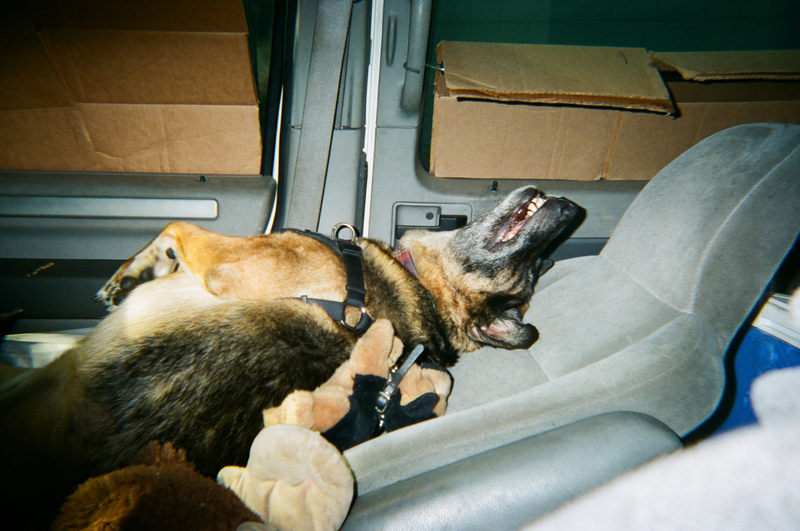
George’s anonymous owner: “Well you can see she’s kinda the center of my whole world here. Everything. I mean when she was gone, oh my god. I didn’t wanna take any pictures, I didn’t wanna do anything, I wanted my dog back. That was the only thing on my mind. I didn’t deal with the RV for that entire time. I couldn’t. I went up [to the impound lot] and [was given an hour], get what you need for your meds and stuff and let’s go. I didn’t even get clean underwear for myself that day, I grabbed all of George’s stuff to make sure that I got my dog back, because I was going to fight them to the nail and sue the city if I had to [in order] to get my dog back, there was no way they were keeping her from me.”
The Human-Animal Bond

Grace Stroklund, owner of Nugget: “It’s been substantially comforting to have that bond, that connection with him and it’s helped us strive for a better life for not just him, but ourselves. I don’t think we would have been pushing ourselves to get into an actually housed place before we got Nugget as much as we did. The amount of care and effort it takes to have a being like that in your life makes you have to care about yourself and [it] puts a lot of insight into who you are, too. Cuz you’re teaching this creature to be who he is.”
A Dark Memory
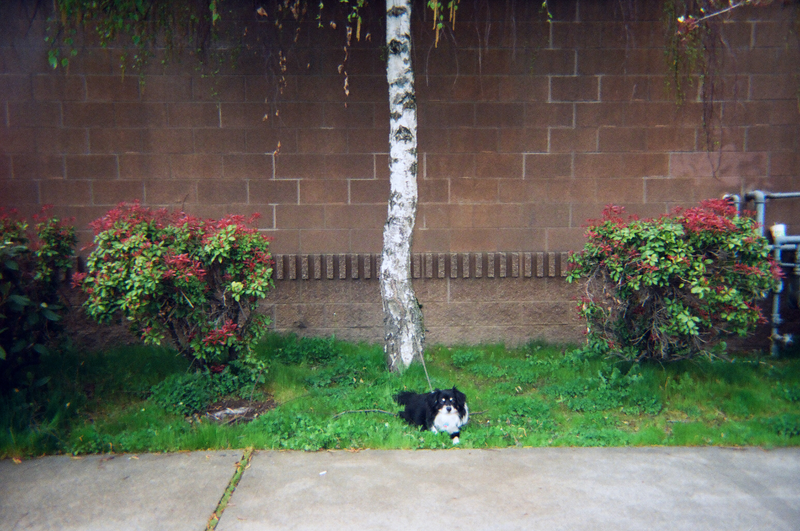
Some people, such as the anonymous owner of this dog, recalled the dark moments they’ve experienced during their struggles with housing while taking their photos: “This right here, I tried to kill myself right behind this tree. Twice. Two different days in July. And then once in Capitol Hill. He wasn’t with me. He was at my friend’s house. All three time. Cuz I’m like hmmm, then what’s gonna happen to the dog?”
Overcoming a Barrier
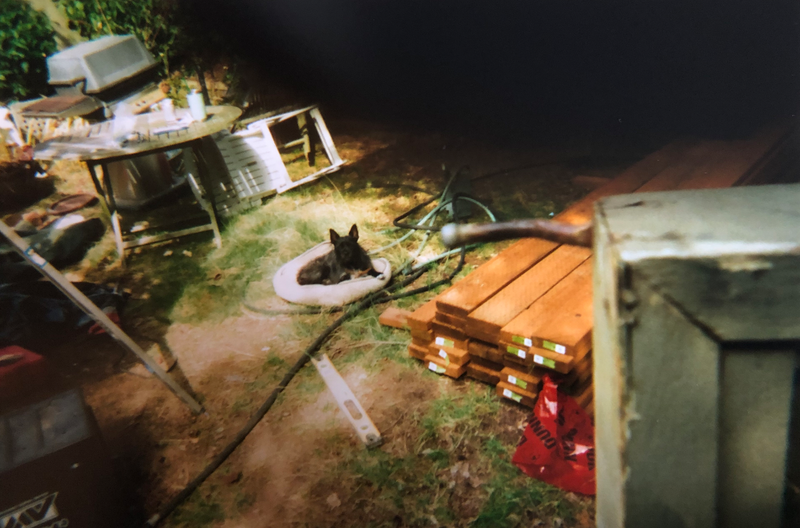
Participant David Friesner discussed the importance of being able to keep his dog with him while working: “[I wanted to communicate] how he incorporated into my work life. Because that was one of the key factors in getting him and being able to keep him and, you know, having him in [my] life, is him being able to come to work with me. If that wasn’t the case, then [I] couldn’t have got him.”
Community Empathy
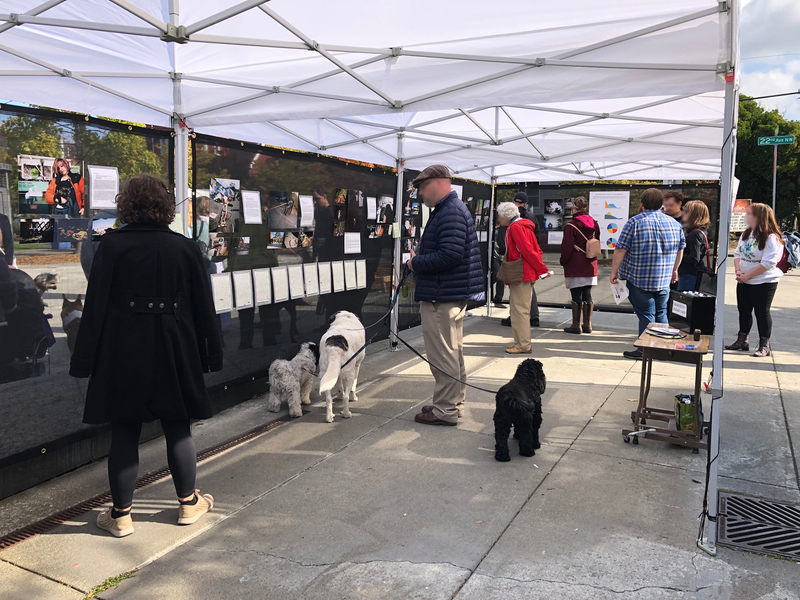
One of the exhibit visitor comments said: “I never understood how/why people who are experiencing homelessness could have pets when they can barely support themselves. Turns out that maybe if more emotional support animals exist, unstably housed people could better their mental health.”
“We’re All People”
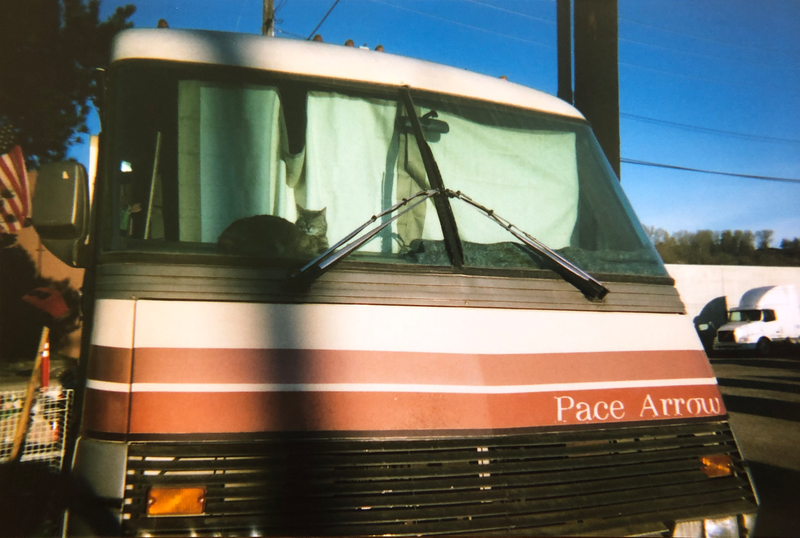
Participant Dee Powers discussed the similarities between her and other pet owners living with more stable housing: “Living homeless with cats in a motorhome is no different than living housed with cats in an apartment or motorhome. We are no different, we just don’t have as stable of an income. You know, we don’t have a $US200,000 motorhome, we’ve got a $US2,000 motorhome. My point is that life out here has some differences, but we’re all the same. We’re all people, you know? And people have pets. And pets are a huge comfort to these people’s lives. I will eat ramen for the rest of my life before I betray my promise to give them a forever home.”
